Straighten Up: Mastering the Art of Hair Straightening Tools
Welcome to the Colourway.pk manual to hair straightening tool skills! whatever your level of expertise, this thorough manual will assist you in understanding all the details you require about hair straighteners.
What Are Hair Straighteners?
Hair straighteners, sometimes referred to as flat irons, are vital tools in the hairstyling trade as they provide an efficient method for getting sleek, straight hair. These appliances, which typically consist of two hot plates pressing down on sections of hair, deliver light and hair to straighten or style it. Hair straighteners come in a variety of sizes, methods, and materials, and each one has unique characteristics and benefits.
Types of Hair Straighteners
- Ceramic Straighteners: The most common types of straighteners for hair are these ones, which are renowned for their capacity to uniformly distribute heat throughout the plates. This reduces the chance of hot spots, which can harm hair. Ceramic straighteners are perfect for daily use and work well with most hair types.
- Titanium Straighteners: Due to its rapid heating up and keeping up extreme temperatures, titanium irons are popular. They are therefore perfect for thick or coarse hair that demands a higher heat for effective flattening. Additionally lightweight, titanium plates are pleasant to use for extended periods of time.
- Tourmaline Straighteners: To enhance the performance of ceramic dishes, tourmaline, a semi-precious material, is frequently used. Heat causes tourmaline to release negative ions, which smooths and brightens hair by reducing frizz and static electricity. Hair that is frizz-prone and fine or damaged can benefit from tourmaline straighteners.
- Ionic Straighteners: Negative ions released with ionic straighteners dissolve the positively charged water molecules on the surface of hair. This keeps hair neat and shining by reducing frizzy & static. All hair types can use ionic straighteners, although thick or coarse hair responds well to them.
How to Choose the Right Hair Straightener

Choosing a suitable hair straightener is vital for getting the best results without causing damage to your hair. Here's a thorough guide to help you with coming to a decision:
- Consider Your Hair Type and Length:
- For fine or thin hair, choose a straightener with lower heat settings to prevent damage.
- Thick or coarse hair requires a straightener that can reach higher temperatures for effective straightening.
- Short hair may benefit from a smaller plate size, while longer hair may require wider plates for quicker styling.
- Plate Material:
- Ceramic plates distribute heat evenly and are suitable for most hair types.
- Titanium plates heat up quickly and maintain high temperatures, making them ideal for thick or coarse hair.
- Tourmaline-infused plates emit negative ions, reducing frizz and static, making them suitable for fine or damaged hair.
- Adjustable Heat Settings:
- Look for a straightener with adjustable heat settings to prevent overheating and damage.
- Fine or damaged hair should be styled at lower temperatures, while thicker or coarser hair may require higher temperatures for effective straightening.
- Plate Size:
- Smaller plates are ideal for short hair or precise styling, while wider plates are suitable for long or thick hair, allowing you to style larger sections at once.
- Additional Features:
- Consider features such as a digital display, auto-shutoff, and dual voltage for added convenience and safety.
- A swivel cord allows for easy maneuverability while styling, reducing tangling and strain on the cord.
- Brand Reputation and Reviews:
- Research different brands and read reviews to determine the reliability and performance of the straightener.
- Look for brands known for their quality and customer satisfaction.
- Budget:
- Set a budget based on your needs and preferences, keeping in mind that a higher price does not always guarantee better performance.
- Consider the long-term investment and durability of the straightener.
By taking these things into account, you can select the best hair straightener for your hair type, styling requirements, and price range, guaranteeing sleek, silky results without endangering the health of your hair.
Advice for Using Irons in Hair

But using a hair straightener may appear straightforward, there's some tips that you may try to get the greatest results while also taking care of your hair. To help you get the most out of your hair straightening procedure, here is a detailed guide:
- Start with Dry Hair:
- It's essential to start with completely dry hair to prevent damage. Wet or damp hair is more prone to breakage when exposed to heat.
- Use Heat Protectant:
- Before straightening, apply a heat protectant spray or serum to your hair to create a barrier against heat damage. Focus on the ends and mid-lengths of your hair, where damage is most likely to occur.
- Section Your Hair:
- Divide your hair into sections using clips or hair ties. This will make it easier to work with smaller sections, ensuring that each strand is evenly straightened.
- Start from the Bottom:
- Begin straightening from the bottom layers of your hair and work your way up to the top. This ensures that all layers of your hair are evenly straightened.
- Use the Right Temperature:
- Adjust the temperature of your straightener based on your hair type. Fine or damaged hair should be straightened at lower temperatures, while thicker or coarser hair may require higher temperatures for effective straightening.
- Use a Comb:
- Use a fine-toothed comb to guide the straightener through your hair. This helps to keep the hair smooth and tangle-free, resulting in a sleek finish.
- Avoid Overlapping:
- Avoid running the straightener over the same section of hair multiple times, as this can cause damage. Instead, use a single, slow pass to straighten each section.
- Finish with a Serum:
- Once you've straightened your hair, apply a lightweight hair serum to add shine and reduce frizz. This will help to keep your hair looking sleek and smooth throughout the day.
- Clean You’re Straightener:
- Regularly clean your straightener to remove product buildup, which can affect its performance. Use a damp cloth or cotton pad to wipe the plates clean after each use.
- Store Properly:
- Store your straightener in a heat-resistant pouch or mat to protect it from damage. To prevent damage that occurs as time passes, avoid winding the cable firmly around a straightener.
By using these recommendations, you can use an iron to get salon-quality results while maintaining the good health and beauty of the hair you have.
Maintenance and Care
- Clean your straightener regularly to prevent product buildup.
- Store it in a heat-resistant pouch or mat to avoid damage.
- Avoid using the highest heat setting daily to prevent damage to your hair.



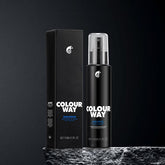

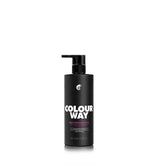





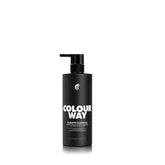

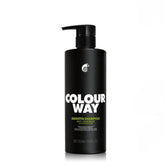

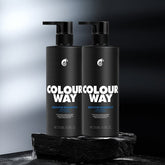

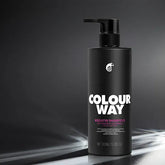

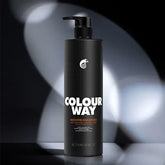

Leave a comment
All blog comments are checked prior to publishing